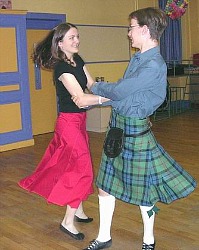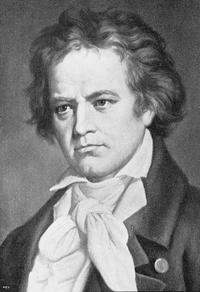The Ecossaise
A dance in the
Scottish style

The Ecossaise is a type of dance in a Scottish style, it particularly featured as one of the many types of contra dance which were popular in late 18th century and early 19th century. It was popular in France and Great Britain. The dance is in a quick 2/4 time. A double line of couples, men facing the women, is the starting position of the dance; as each of the figures of the dance is executed the couples progress towards the head of the line.
Jane Austen society Florence

for piano, military band
and other ensembles
Compositions inspired by the vogue of the Ecossaise include :
- piano compsitions by the likes of Franz Schubert and Frédéric Chopin
- works for military band or small orchestra by Beethoven
- Guitar pieces by composers such as Mauro Giuliani
- An Ecossaise by J. N. Hummel is included in the second volume for piano in the Suzuki Method
| Find your favourite Ecossaise Sheet music at this page! |
|---|
directed by David Grimes
performs a Ballade Ecossaise
Other Musical forms :
- The Caprice
- The Ecossaise
- The Etude
- The Waltz
- The Polonaise
- The Rondo
- The Caprice
- The Scherzo
- The Sonata
- The Fantasia
- The Passacaglia
- Variation
- The Etude
Ecossaise Media |
Franz Schubert's Two Ecossaises
|
Mauro Giuliani's Ecossaise
|






